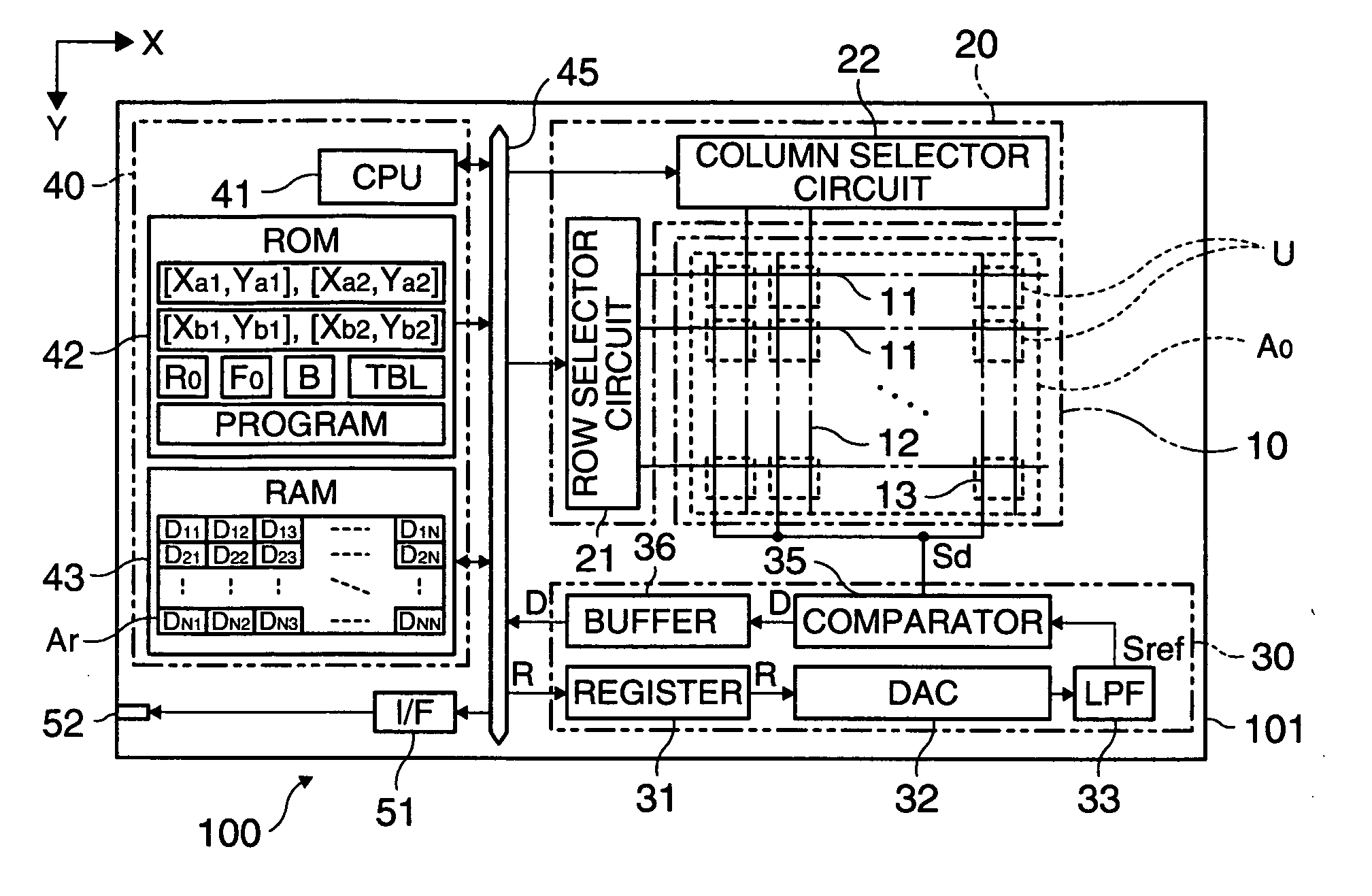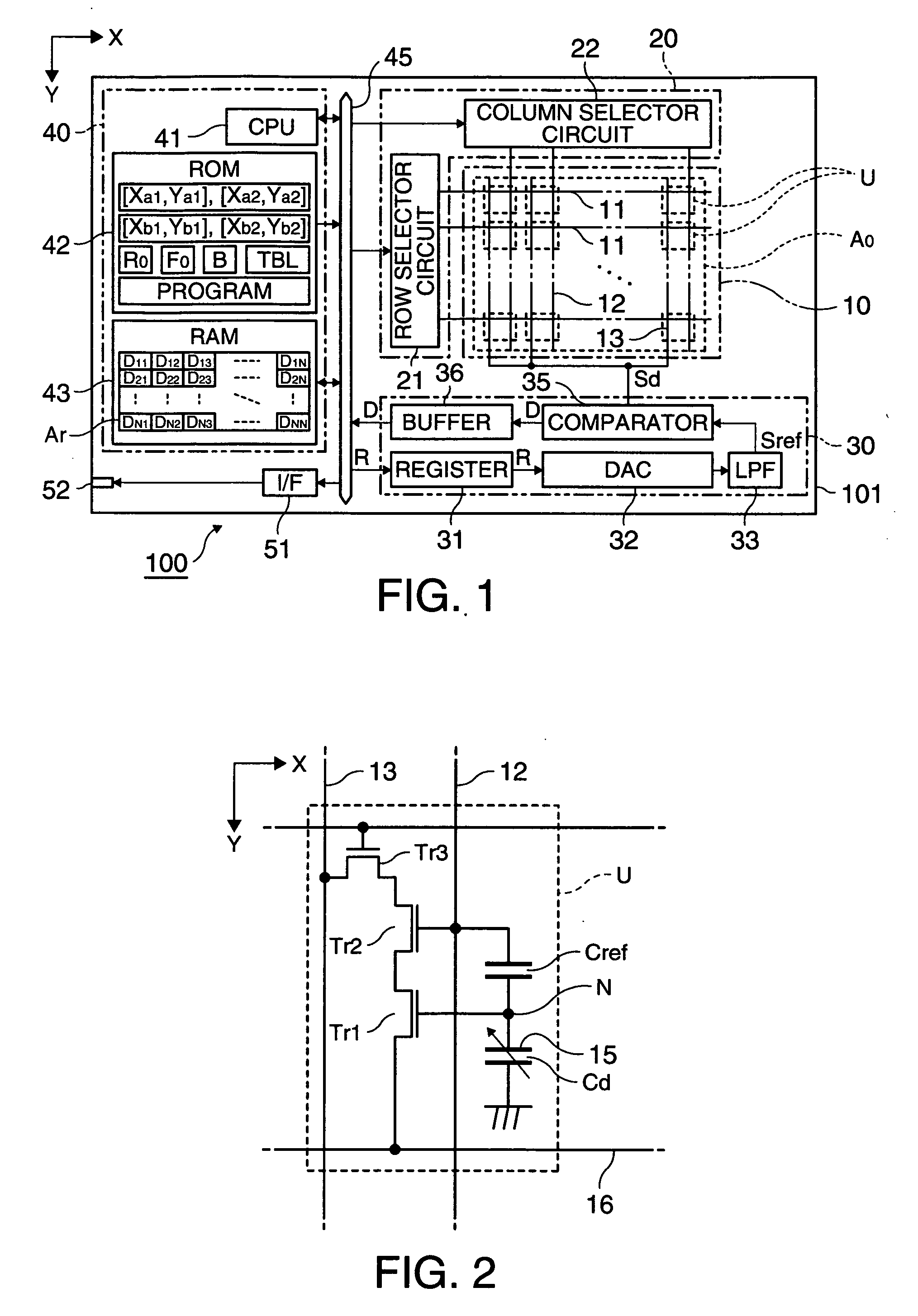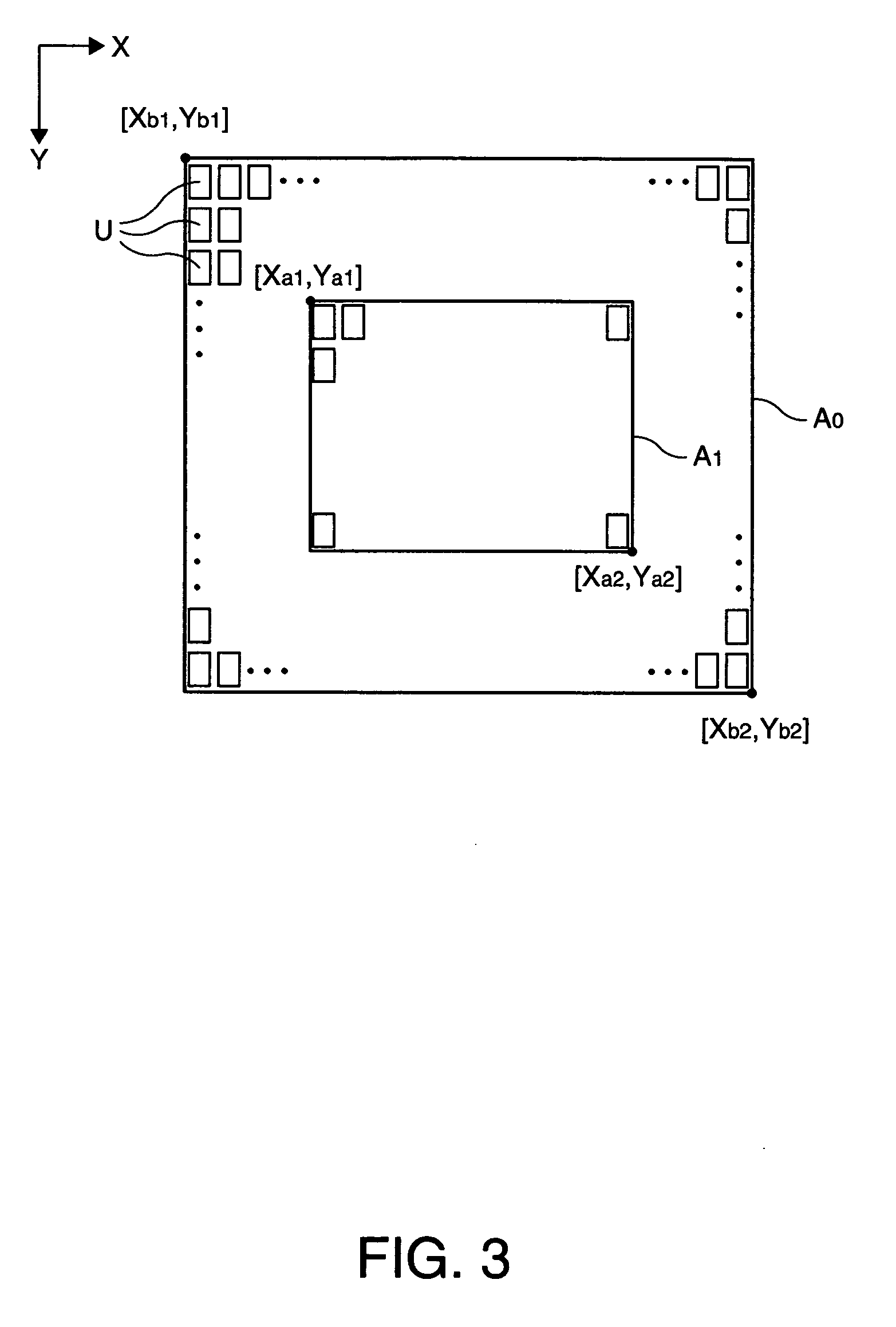Detecting device and authentication device
a detection device and authentication technology, applied in the field of surface detection, can solve the problems of user cumbersome operation, detection device electric characteristics subject to fluctuations, etc., and achieve the effect of reducing the load of arithmetic processing
- Summary
- Abstract
- Description
- Claims
- Application Information
AI Technical Summary
Benefits of technology
Problems solved by technology
Method used
Image
Examples
first embodiment
[0029] First Embodiment
[0030] Structure of Detecting Device
[0031]FIG. 1 is a block diagram illustrating the configuration of a detecting device according to this embodiment of the invention. A detecting device 100 detects a surface of an object close to or in contact with a surface exposed to the outside (hereafter referred to as “detecting surface”). As shown in FIG. 1, the detecting device 100 includes: multiple sensors 10 composed with a plurality of sensor circuits U arrayed in a matrix within a rectangular area A0 (hereafter “detection area”); a selector circuit 20 for activating each of the sensor circuits U in the multiple sensors 10; a detector circuit 30 that processes a signal Sd output from each of the sensor circuits U (hereafter “detected signal”); a control device 40 that controls the action of each unit in the detecting device 100; and an interface 51 for outputting the results of the detection by the detecting device 100 outward, and an output terminal 52 connected ...
second embodiment
[0062] Second Embodiment
[0063] A second embodiment according to the present invention will now be described. In the exemplary structure of the first embodiment, the pre-scan process for adjusting the reference signal Sref is performed as a different process from the main scan processing (in other words, the process to extract the detected data D that is an output target outward). In contrast, in this embodiment, the level of the reference signal Sref used in the next main scan process is adjusted, based on the detected data D extracted in the main scan process previous to that next main scan process. In this second embodiment, the same signs and numerals are used for the same elements as in the first embodiment, and the description thereof is omitted.
[0064] Operation of Detecting Device 100
[0065]FIG. 7 is a flow chart illustrating the steps of a program run by a CPU, according to this second embodiment of the invention. As shown in FIG. 7, the CPU 41 stores the initial value R0 sto...
first modified example
[0077] First Modified Example
[0078] The steps of the output process is not limited to the one in the exemplary structures of the embodiments, where the detected data D is output outward from the output terminal 52 in the output process of the step Sa14 in FIG. 4 or the step Sb6 in FIG. 7. Examples of the output process may include the steps described below.
[0079] First Exemplary Modification
[0080] As shown in FIG. 8, when the output process starts in the step Sa14 in FIG. 4 or in the step Sb6 in FIG. 7, the CPU 41 extracts parts that are characteristic when identifying the shape of the object's surface (hereafter referred to as “characteristic point”), based on the detected data D stored, at the start of the process, in the storage area Ar of the RAM 43 (step Sc1). This characteristic point is, for instance, a branching point or an end point of a fingerprint of human hand. Thereafter, the CPU 41 generates data which expresses the location of the characteristic points extracted in ...
PUM
 Login to View More
Login to View More Abstract
Description
Claims
Application Information
 Login to View More
Login to View More - R&D
- Intellectual Property
- Life Sciences
- Materials
- Tech Scout
- Unparalleled Data Quality
- Higher Quality Content
- 60% Fewer Hallucinations
Browse by: Latest US Patents, China's latest patents, Technical Efficacy Thesaurus, Application Domain, Technology Topic, Popular Technical Reports.
© 2025 PatSnap. All rights reserved.Legal|Privacy policy|Modern Slavery Act Transparency Statement|Sitemap|About US| Contact US: help@patsnap.com



